The Australian Dollar Retreats after RBA Cuts Seen Doing Little for Households
- Written by: James Skinner
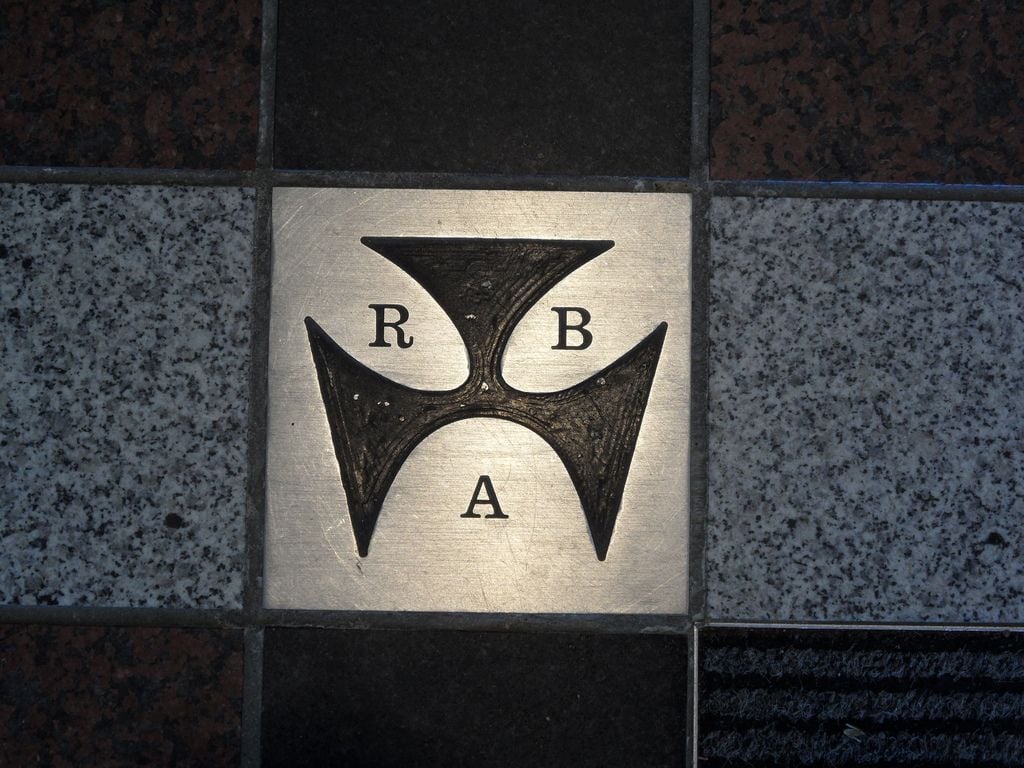
Image © Newtown Grafitti, Reproduced under CC Licensing.
- AUD slides after RBA cuts stoke unease among households.
- Falling confidence a risks to spending, growth and inflation.
- Does little to discourage idea of third RBA rate cut in 2019.
- But Fed rate guidance increasingly important for AUD outlook.
- UBS sees AUD at new lows Vs USD, besting GBP by year-end.
The Australian Dollar remained on its back foot overnight and into the Wednesday session after a Westpac survey showed consumer confidence retreating for a second consecutive month, helping Pound Sterling to its fifth day of gains over the Antipodean unit.
Westpac's Australian consumer confidence index fell by 4.1% to a two-year low of 96.5 in July, marking a second consecutive decline that comes despite a duo of Reserve Bank of Australia (RBA) interest rate cuts being delivered over the same time period.
"The fall in sentiment this month is troubling as it comes against what should have been a supportive backdrop for confidence," Westpac says. "The main driver continues to be deepening concerns about the outlook for the Australian economy and prospects for family finances."
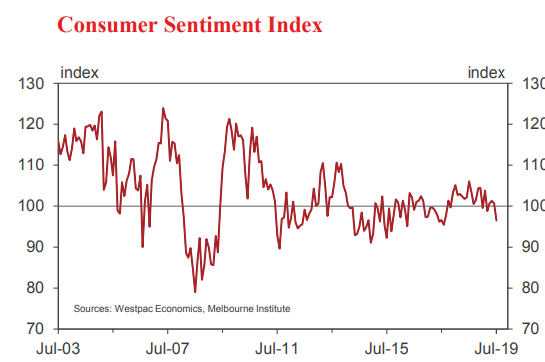
Above: Westpac consumer confidence index.
July saw a package of tax cuts passed through the Australian parliament and the second of two interest rate cuts from the Reserve Bank of Australia unveiled. It also brought with it signs of stabilisation in the Sydney and Melbourne housing markets but none of this was enough to prevent confidence sliding again.
Australia's economy has slowed sharply since the end of June 2018, much like those in the rest of the developed world, as business confidence and investment have been crimped by the U.S. trade war with China and fears of a broad global economic slowdown.
In addition, property prices in all of Australia's main cities have fallen steeply in the last 18 months, which has also undermined household confidence and threatened consumer spending. These factors, and years of weak wage growth, are why the RBA has cut rates twice already and is expected to do so again by the end of 2019.
Uncertainty over the outlook for the domestic economy, RBA policy and global economic growth explains why the Brexit-battered Pound has been able to edge higher against the Aussie for the last five consecutive trading days despite Sterling sustaining losses against most other rivals in that period.
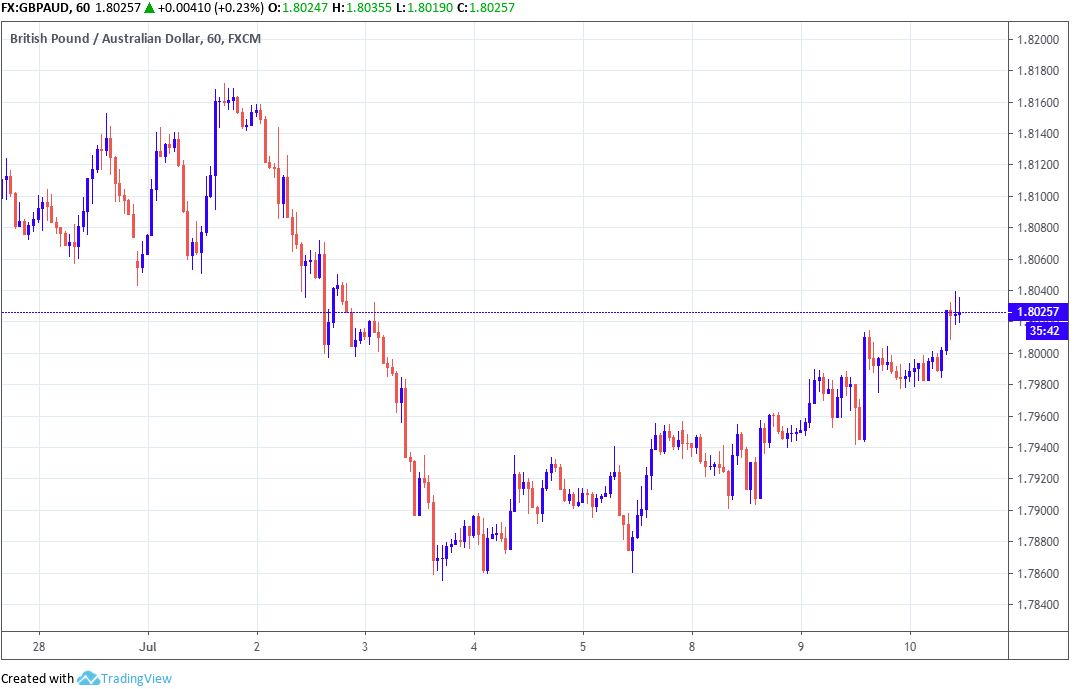
Above: Pound-to-Australian-Dollar rate shown at hourly intervals.
"Looking at the details, the RBA’s back‑to‑back cash rate cuts appear to have increased concerns around the economy rather than alleviated them," says Kim Mundy at Commonwealth Bank of Australia.
The RBA said at the beginning of July that it will now "monitor developments in the labour market closely and adjust monetary policy if needed", after cutting its cash rate to a new record low of 1%. It cited below-target inflation, slowing economic growth and a loss of momentum in the jobs market for the decision.
RBA Governor Philip Lowe said economic growth, wages and inflation should pick up slightly during the quarters ahead but that policymakers would act again if the bank is proven wrong. Financial markets are still betting the RBA will cut its cash rate to 0.75% before the year is out.
If falling confidence translates into lower spending and slower growth later this year then the bank could find itself forced to cut rates again, although there's uncertainty about the likely impact this will have on the Aussie.
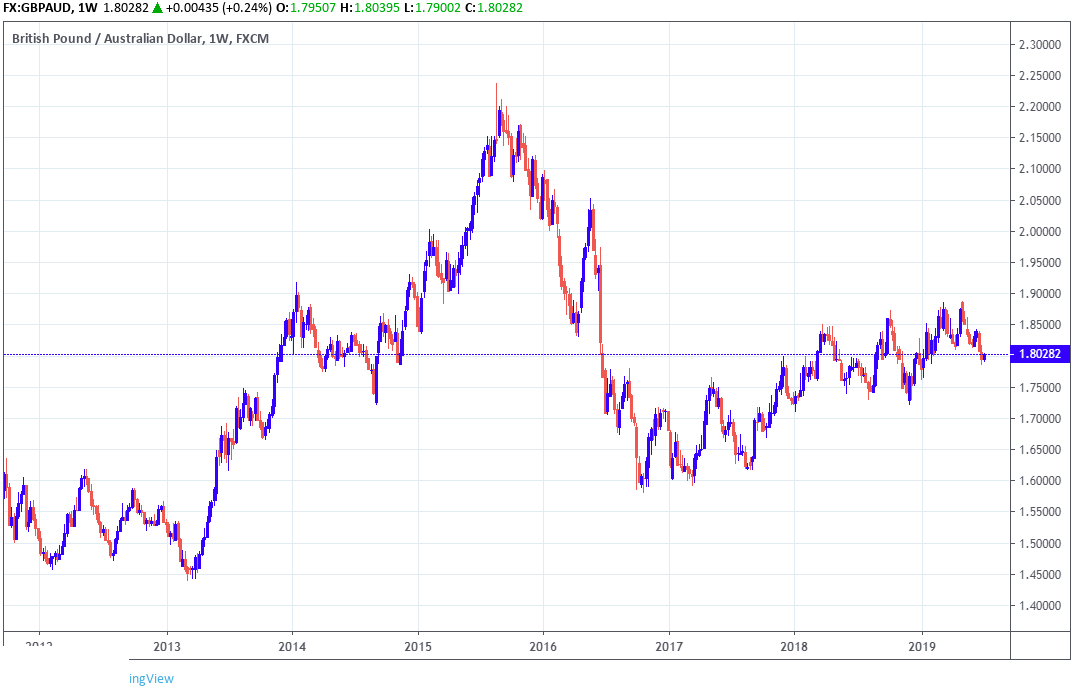
Above: Pound-to-Australian-Dollar rate shown at weekly intervals.
"How low the AUD falls will be defined by how aggressively the RBA eases and the success of Chinese stimulus efforts," says Tom Kenny at Australia & New Zealand Banking Group (ANZ). "The Fed remains the focus of markets, globally, with expectations of easing supporting risk assets broadly."
The outlook for domestic interest rates is important but the exact impact that further rate cuts would have on the Aussie will be determined as much by developments at the Federal Reserve in the U.S. as it will anything in Australia. Fed Chairman Jerome Powell will update congress on the outlook for U.S. monetary policy at 15:00 Wednesday.
U.S. interest rates and bond yields rose sharply in 2018, which increased the return that investors could earn from selling Australian assets and buying U.S. alternatives without the RBA ever actually having done anything itself.
As a result the four rate hikes seen in the U.S. last year drove the Aussie lower against the greenback as well as all other currencies that were not expected to be blighted sooner or later by falling rates. Only now the market is looking for the Fed to reverse course and begin cutting its own rate.
"Our base case is for the AUD to fall to 66c by end-2019 and recover marginally by end-2020 (up to 0.70c); as both rates and commodities, the traditional drivers of the AUD, are either signalling that it should be a lot lower in the case of rates or that its trajectory is at risk of turning," says Giulia Specchia at UBS.
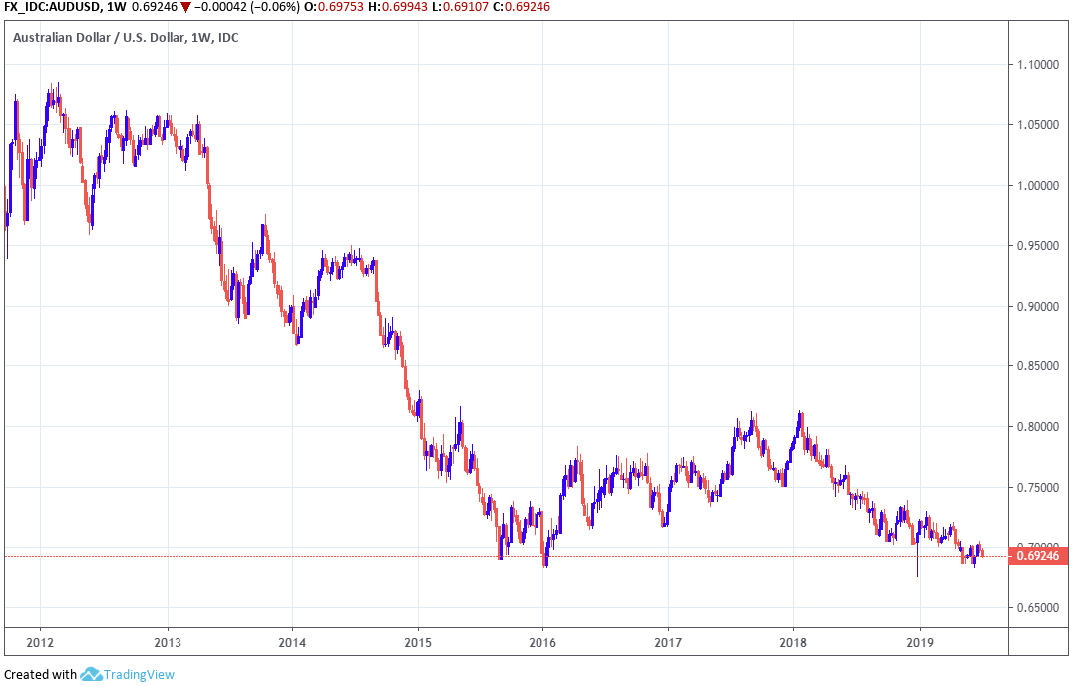
Above: AUD/USD rate shown at weekly intervals.
If the Fed was to cut its interest rate this year then it could mean the Australian Dollar is able to avoid further significant damage if the RBA also cuts again, because the impact on the returns offered to investors owning Aussie assets instead of those from the U.S. would be minimal. But the reverse is also true.
Pricing in the overnight-index-swap market implies an RBA cash rate of 0.79% on December 03, the date of the bank's final decision for 2019, which suggests investors see a high probability of another cut this year. Meanwhile, the Fed is expected to cut its rate by 25 basis points almost three times.
UBS forecasts the Fed will slash U.S. borrowing costs twice this year and that the RBA will cut once more, which it says should see the Australian Dollar fall by almost five percent to 0.66 against the U.S. Dollar.
However, and on a brighter note, the bank also projects the Aussie will win back some lost ground from the Brexit-stricken Pound Sterling, with the Pound-to-Australian-Dollar rate seen falling from 1.80 on Wednesday to 1.77 by year-end.
Time to move your money? Get 3-5% more currency than your bank would offer by using the services of foreign exchange specialists at RationalFX. A specialist broker can deliver you an exchange rate closer to the real market rate, thereby saving you substantial quantities of currency. Find out more here.
* Advertisement




